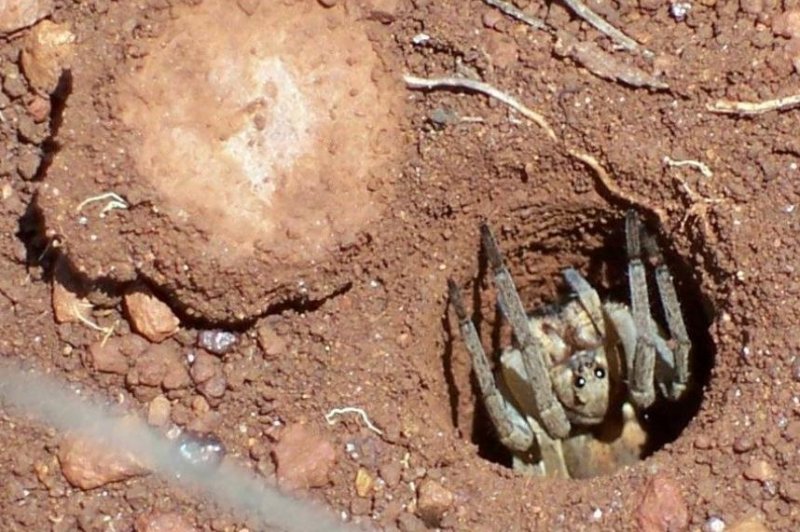Trapdoor spiders are on the decline in Australia, new research suggests. Photo by
Graham Manning/CC
ADELAIDE, Australia, Dec. 9 (UPI) -- New survey data suggests trapdoor spider populations are declining throughout southern Australia.
Researchers quantified the abundance of trapdoor spiders at various locations across Australia's southern agricultural and arid zones. Scientists compared their numbers to datasets dating back to the 1950s.
The findings -- detailed in the journal Austral Entomology -- revealed significant declines.
"We have good historical records of trapdoor spiders going back 60 years which showed population numbers were reasonably good, but recent surveys of the same areas show numbers are extremely low, and in some cases spiders are completely absent," lead researcher Andrew Austin, a professor at the University of Adelaide, said in a news release.
The authors of the latest study suggest trapdoor spider biodiversity is unacknowledged in the scientific literature. Though there are a few species common to domestic gardens, many more are in unique ecological niches and little understood. Scientists worry some species may disappear before they're ever named.
Trapdoor spiders are named for their unique nest building and hunting strategies. The spiders wait and watch for prey behind a false door at the entrance to their burrow. When an unsuspecting victim wanders too close, they appear in a flash, grab their meal and pull it into their den.
Previous studies have shown the females of species to occupy the same trapdoor burrows for upwards of 25 years. But increasingly, scientists are findings abandoned burrows.
"The problem in some areas looks to be that the few spiders surviving are old females, and an absence of males means there is no capacity to reproduce, and they eventually die and the population disappears," explained Mark Harvey, a researcher and spider expert at the Western Australian Museum. "The reasons for this decline are probably complex but are undoubtedly linked to a century of intensive land clearing and the fact that trapdoor spiders are susceptible to soil disturbance around their burrows."
Austin, Harvey and their colleagues hope better monitoring efforts will offer a better understanding of the problem.
"To get a better handle on the extent of the problem, there is a real need for more detailed follow up surveys, including to assess where remnant populations still exist," concluded Queensland Museum researcher Mike Rix.















